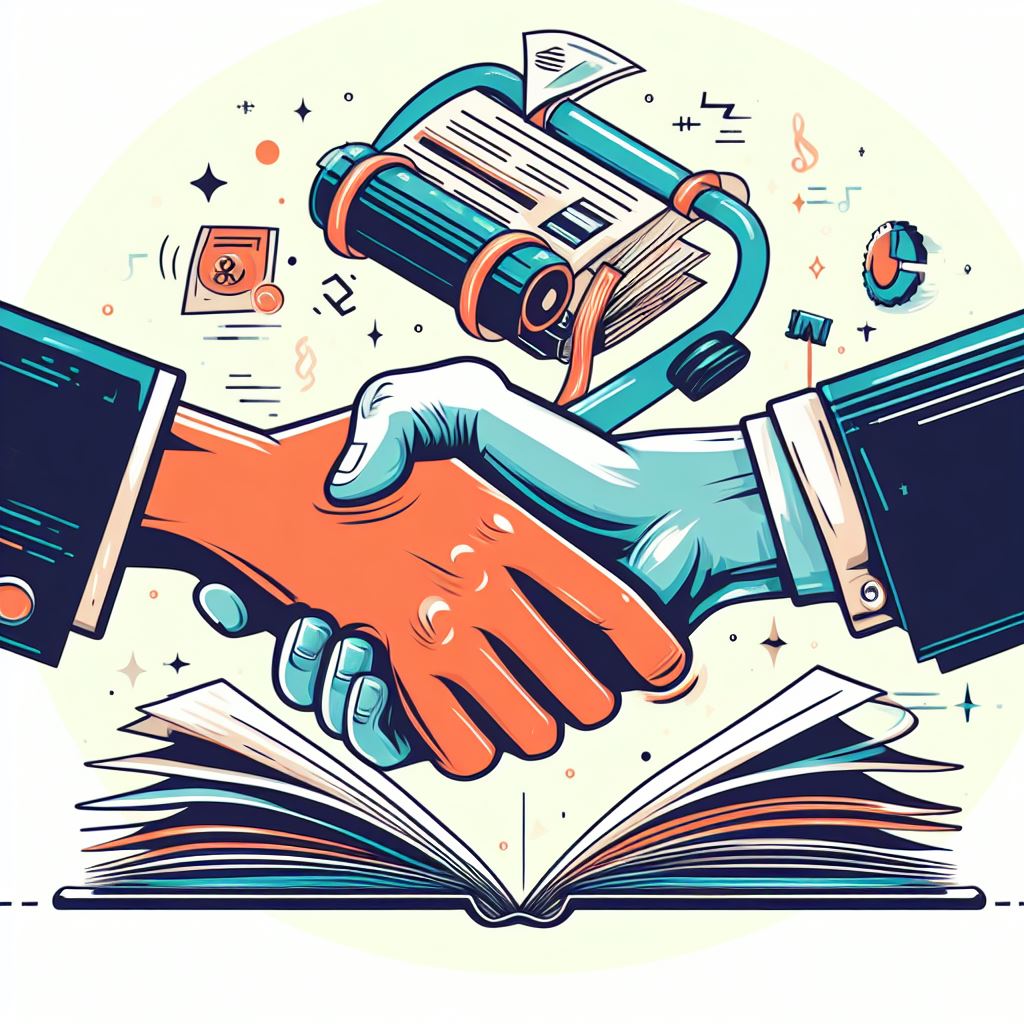Understanding and Navigating Book Publishing Rights: A Comprehensive Guide
Table of Contents Section Page I. Introduction 1 II. Types of Book Publishing Rights 2 A. Primary rights 2 1. World rights 2 2. North American rights 3 3. Territory rights 3 4. Copyright 4 5. Electronic rights 4 B. Subsidiary rights 5 1. Serial rights 5 2. Translation rights 6 3. Film rights 6 4. Audiobook rights 7 5. Merchandise rights 7 III. Negotiating Book Publishing Rights 8 A. Factors to consider 8 1. Author’s experience 9 2. Genre and marketability 9 3. Publisher’s reputation 10 4. Advance payment 10 5. Reversion of rights 11 B. The role of literary agents 12 IV. Self-Publishing and Book Publishing Rights 13 A. Advantages and disadvantages 13 B. Maintaining control 14 C. ISBN numbers and copyright 15 V. Resources for Authors 16 A. Organizations and associations 16 B. Online resources 17 C. Legal and professional advice 18 VI. Conclusion 19 I. Introduction In the vast landscape of publishing, understanding book publishing rights is paramount for both authors and publishers. These rights determine how a work is used, distributed, and monetized. This article delves into the intricacies of book publishing rights, offering insights into their types, negotiation strategies, and the intersection with self-publishing. II. Types of Book Publishing Rights A. Primary Rights 1. World Rights World rights encompass the global distribution of a work, giving publishers the authority to publish and sell the book worldwide. 2. North American Rights This subset restricts distribution to North America, providing publishers exclusive rights within this geographical scope. 3. Territory Rights Territory rights grant publishers exclusive rights within a specific geographic region, allowing for tailored marketing and distribution. 4. Copyright Copyright is the bedrock, providing legal protection against unauthorized use and ensuring creators are fairly compensated. 5. Electronic Rights In the digital age, electronic rights govern the use and distribution of e-books, audiobooks, and other digital formats. B. Subsidiary Rights 1. Serial Rights Serial rights involve the publication of excerpts or segments of a work in magazines, newspapers, or other periodicals. 2. Translation Rights Translation rights allow the adaptation of a work into different languages, broadening its reach to diverse audiences. 3. Film Rights Film rights permit the adaptation of a book into a motion picture, opening avenues for cinematic storytelling. 4. Audiobook Rights Audiobook rights cater to the growing demand for spoken-word adaptations, enhancing accessibility and engagement. 5. Merchandise Rights Merchandise rights enable the creation and sale of products related to the book, extending the brand beyond the written word. III. Negotiating Book Publishing Rights A. Factors to Consider 1. Author’s Experience and Reputation An author’s standing in the literary world influences the negotiation power, impacting advances, royalties, and overall deal terms. 2. Genre and Marketability of the Book Genre trends and market demand play a pivotal role in negotiations, affecting the perceived value of the work. 3. Publisher’s Reputation and Track Record Choosing a reputable publisher ensures fair treatment and effective distribution, mitigating risks for authors. 4. Advance Payment and Royalties Negotiating favorable advance payments and royalty rates is crucial for authors seeking financial success and recognition. 5. Reversion of Rights Understanding when and how rights revert to the author is essential, offering flexibility and future opportunities. B. The Role of Literary Agents Literary agents serve as invaluable advocates, navigating negotiations, securing favorable terms, and aligning authors with compatible publishers. IV. Self-Publishing and Book Publishing Rights A. Advantages and Disadvantages Self-publishing empowers authors but comes with challenges. Balancing creative control with market exposure is key. B. Maintaining Control Authors can retain more control over their works when self-publishing, impacting decisions on pricing, distribution, and adaptations. C. ISBN Numbers and Copyright Securing ISBN numbers and copyright protection is essential for self-published authors, safeguarding intellectual property. V. Resources for Authors A. Organizations and Associations Connecting with organizations and associations, such as Book Publisher in Thiruvananthapuram, provides support, networking, and industry insights. B. Online Resources Online platforms, like Ebook Conversion Services and Poetry Publishing Companies, offer valuable information and services to streamline the publishing process. C. Legal and Professional Advice Authors benefit from legal and professional advice available through Academic Book Publishers and other resources, ensuring informed decision-making. VI. Conclusion In the dynamic realm of publishing, mastering book publishing rights is indispensable for authors navigating the industry. This comprehensive guide has explored the nuances of primary and subsidiary rights, negotiation strategies, the role of literary agents, and the intersection with self-publishing. Aspiring authors are encouraged to leverage available resources, seek education, and consider representation to make informed decisions on their publishing journey. Remember, knowledge is power in the world of publishing. Equip yourself, negotiate wisely, and embark on a successful publishing venture.
Understanding and Navigating Book Publishing Rights: A Comprehensive Guide Read More »

